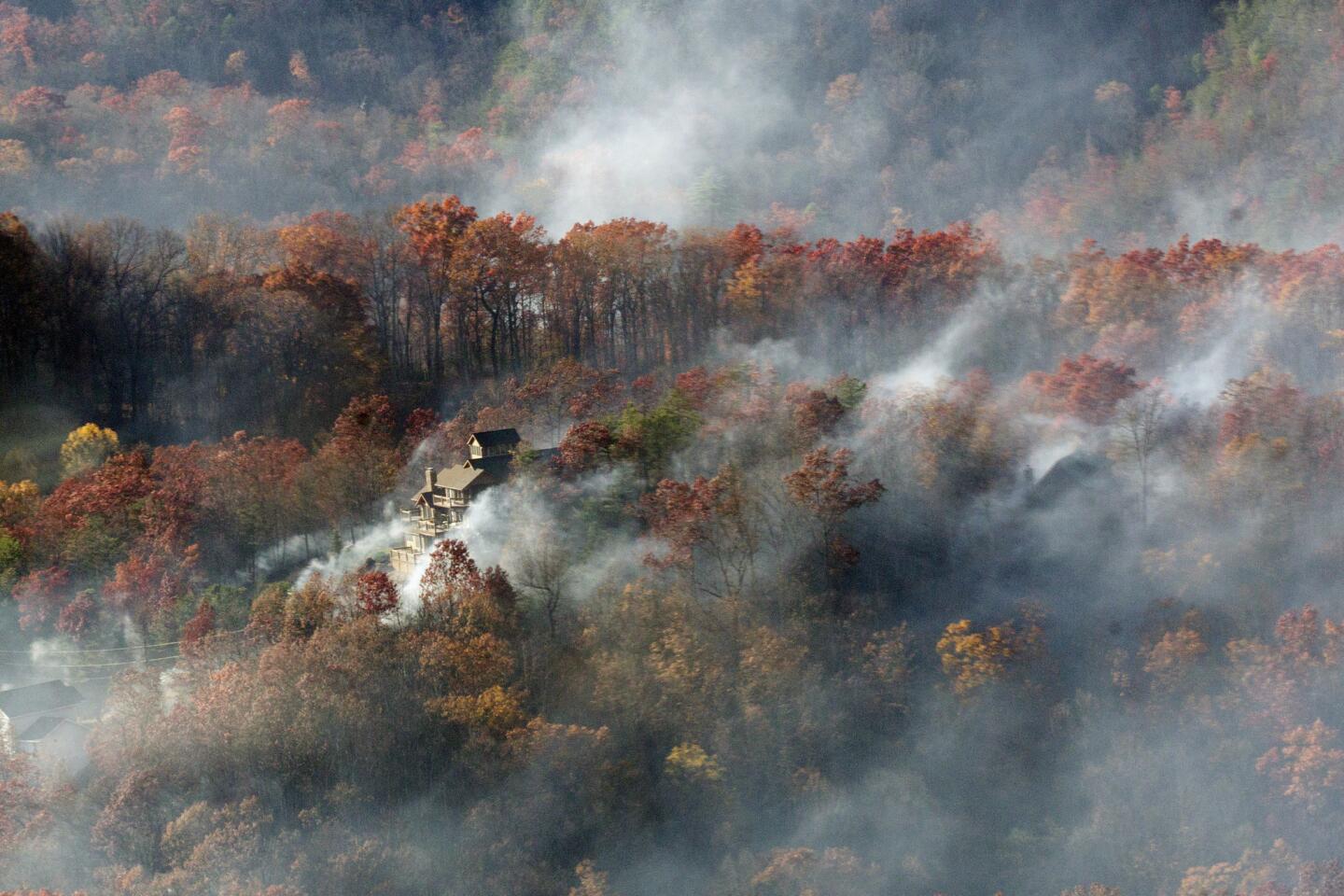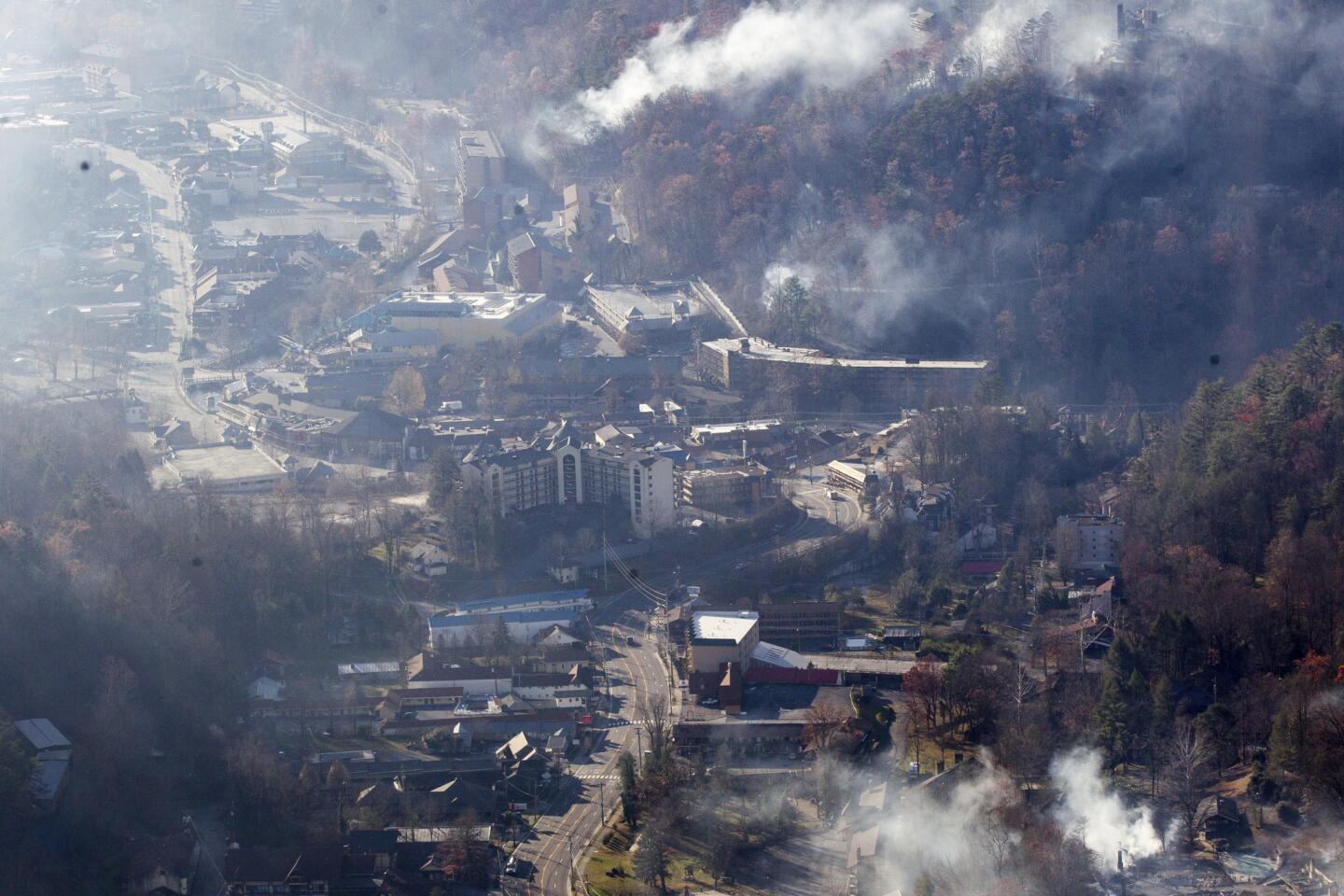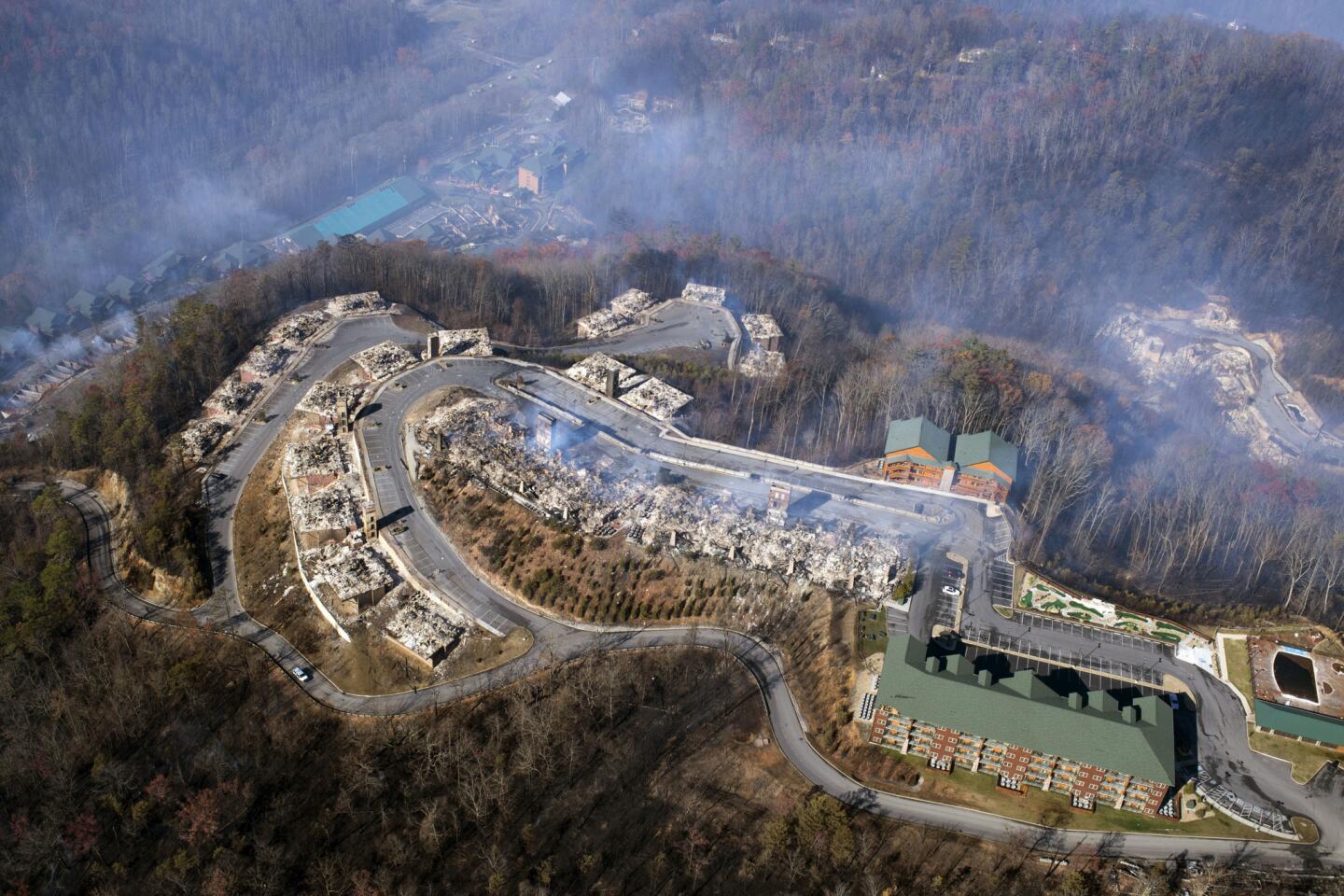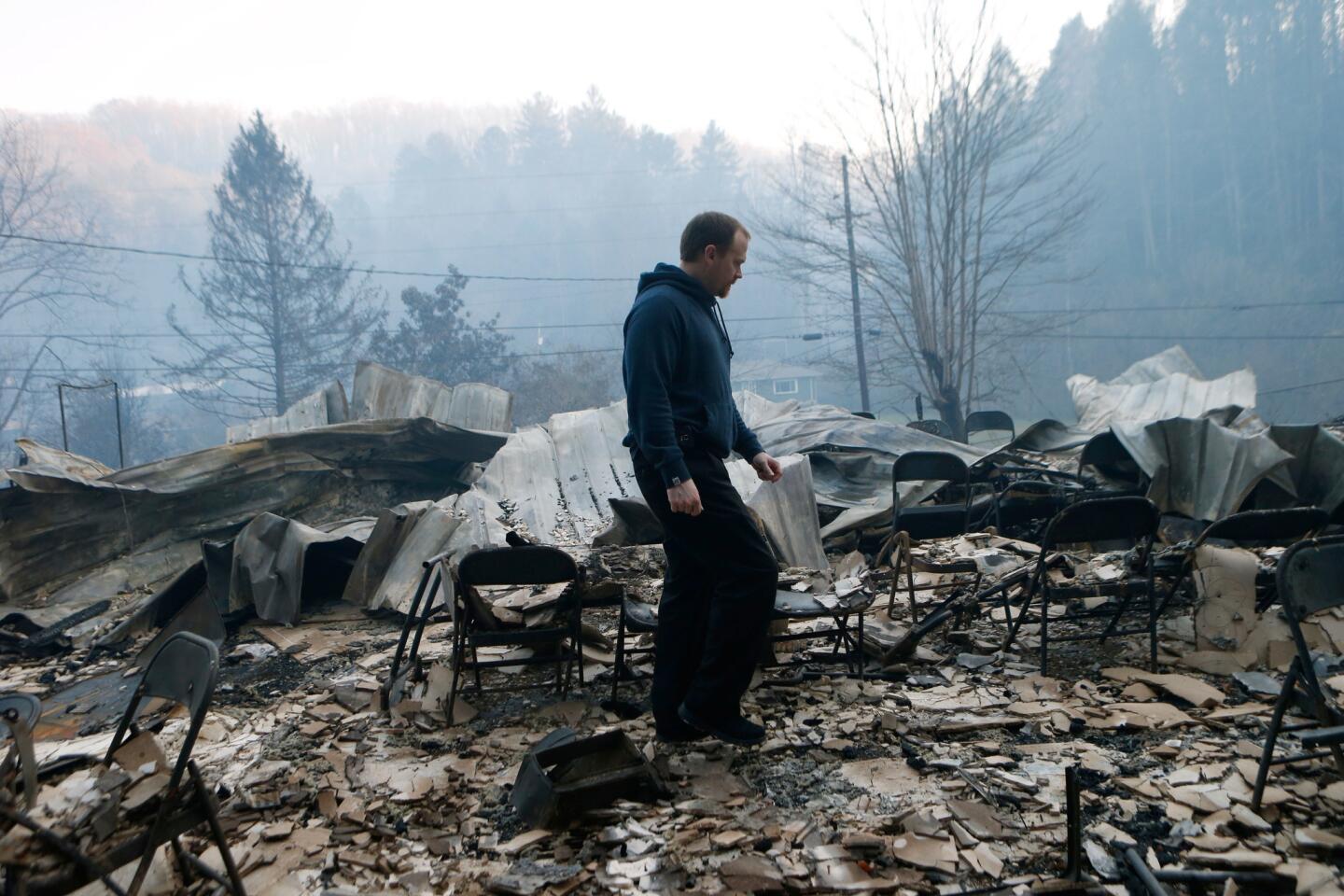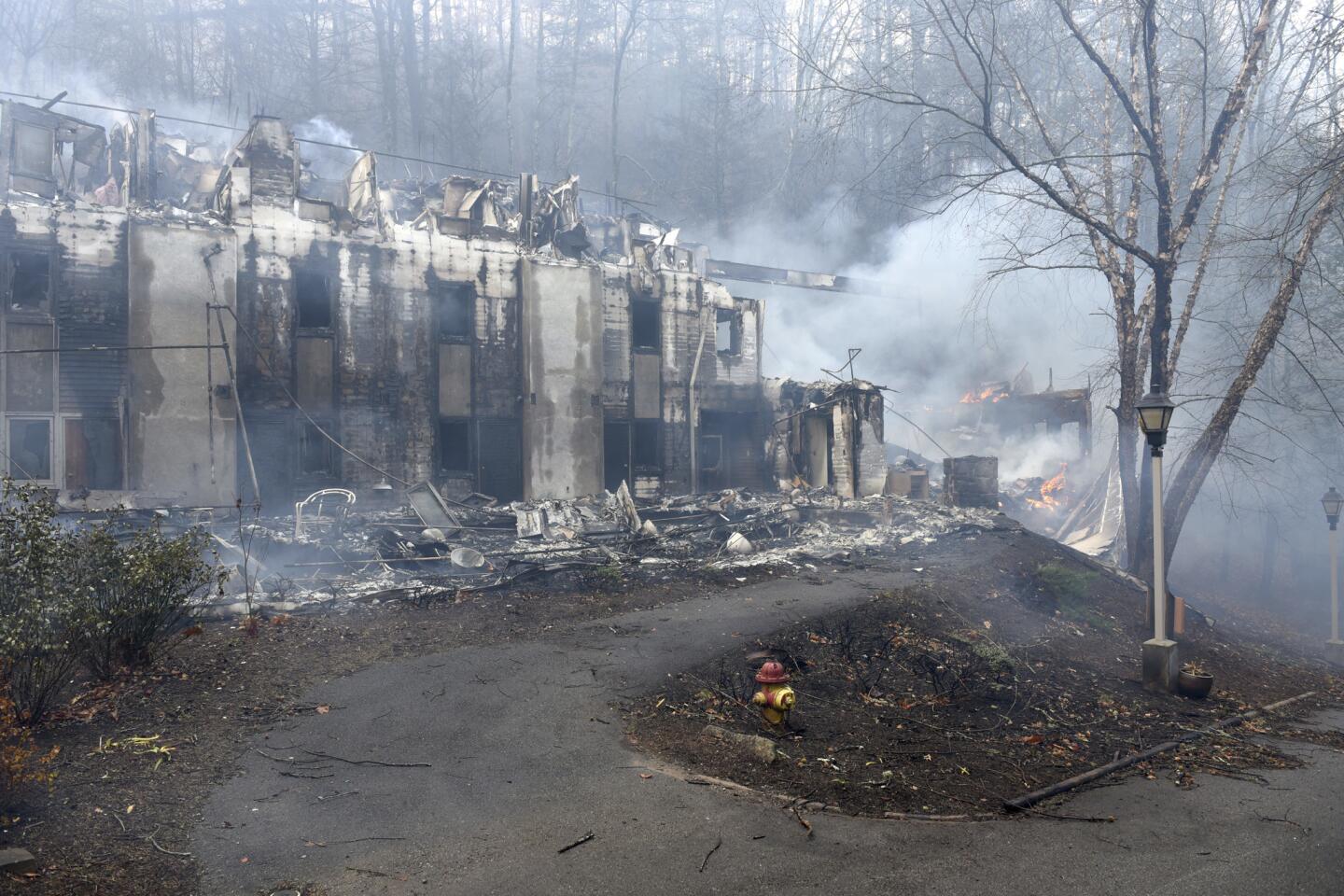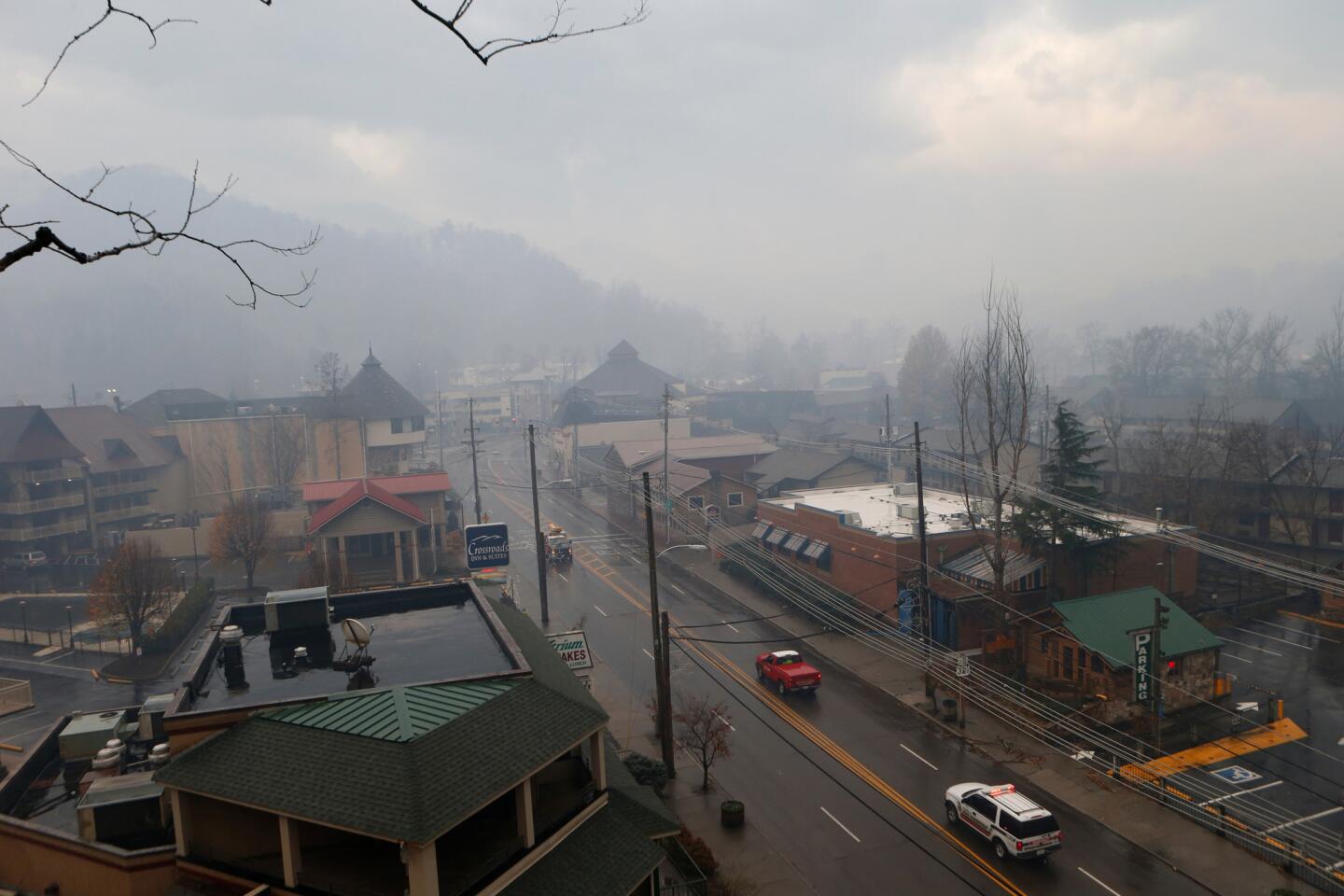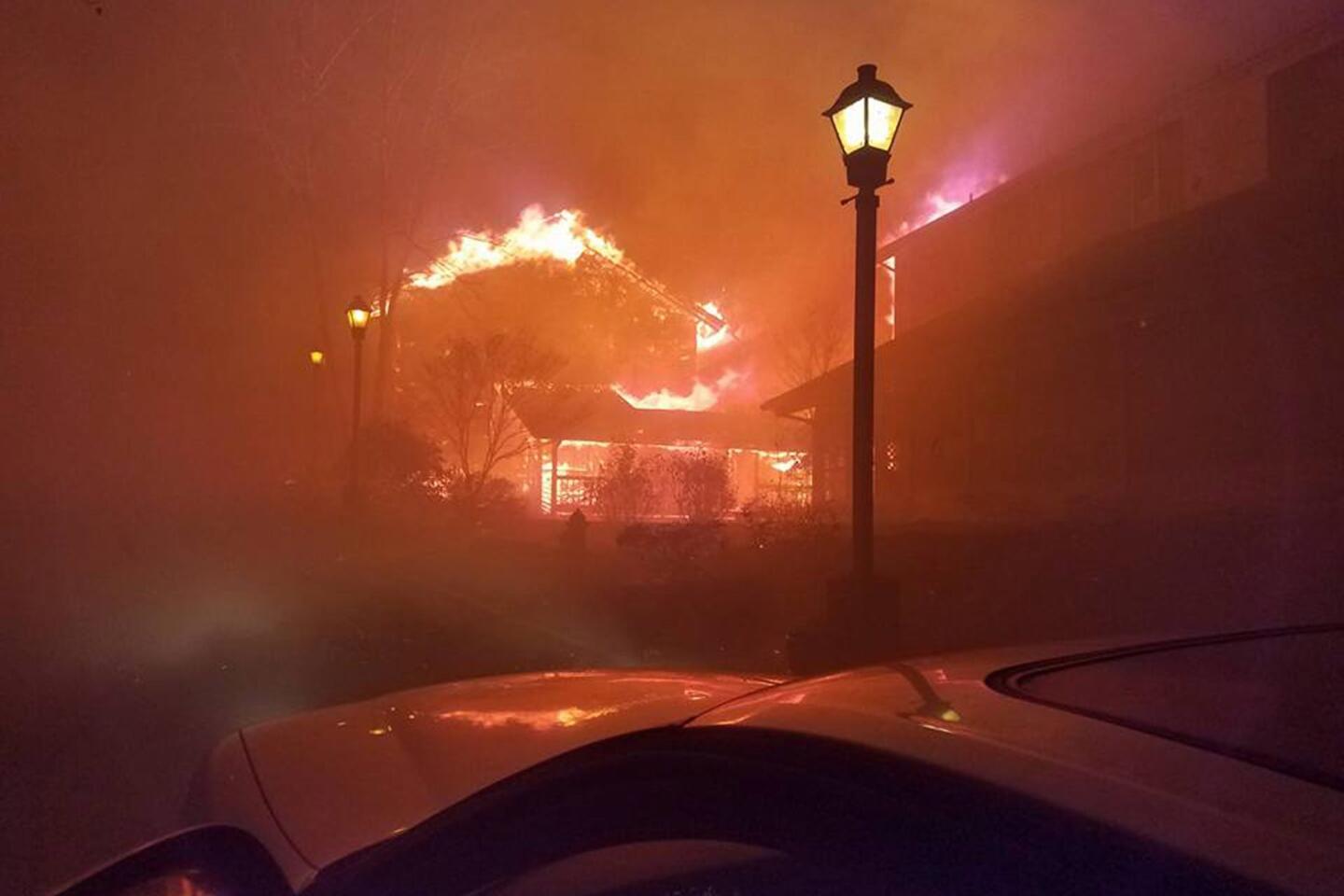Rain finally comes to fire-ravaged Tennessee — along with tornadoes, mudslides and the threat of floods

As of Nov. 30, the disaster had taken nine lives.
- Share via
Reporting from Atlanta — At long last, rain fell on the scorched Appalachian town of Gatlinburg, Tenn., on Wednesday after savage wildfires blazed across eastern Tennessee, killing seven people, forcing thousands to evacuate and burning hundreds of homes to the ground.
Yet even as rainstorms helped firefighters douse the smoldering mountain resort town, which attracts 11 million tourists a year, they brought new threats to the drought-afflicted Southeast: mudslides, heavy winds, lightning, flooding, even tornadoes.
On Wednesday morning, the National Weather Service issued a flood advisory for Gatlinburg and surrounding Sevier County as search-and-rescue teams went door-to-door, scouring charred hills and ridges for anyone who might have been left behind.
Across the region, Tuesday night storms wreaked havoc in rural communities, spawning devastating winds and tornadoes that killed five people, injured dozens more, and flattened homes, churches, gas stations and grocery stores.
A married couple was killed in Polk County in southern Tennessee. Three people perished when a tornado demolished a mobile home in the small town of Rosalie, in northeastern Alabama. Five miles east, a day-care center in Ider, Ala., was destroyed, leaving four children in critical condition.
“We don’t usually get tornadoes this time of year,” said Chief Deputy Rocky Harnen of Jackson County, Ala., where 50 buildings were damaged or destroyed. “But this has not been a normal weather year.”
Wildfires have been spreading for weeks in the Southeast, where a severe drought persists. As many as 20 large fires are blazing across 142,000 acres, according to Adam Rondeau, a spokesman for the U.S. Forest Service, who described the unusually parched conditions as creating the “perfect storm” for wildfires.
On Wednesday, small brush fires continued to erupt around Gatlinburg, about 40 miles southeast of Knoxville. Yet officials said heavy rain was helping firefighters extinguish some of the fires.
“We’re thankful to the big guy from above for that rain, that’s for sure,” Sevier County Mayor Larry Waters said.
Yet the rain was also posing new challenges, creating small mudslides and rockslides, Gatlinburg Fire Chief Greg Miller said.
“The rain may help to prevent some of the further brush fires,” he said. “But unless that rain penetrates deep enough into that leaf clutter, then those hot spots can still arise.”
The fires first threatened neighborhoods Monday night. High winds swept eastern Tennessee, blowing embers from a wildfire on Chimney Tops mountain into Gatlinburg, the gateway to Great Smoky Mountains National Park.
Local officials and residents in the town were taken aback by how swiftly the fires spread as winds ignited new areas and knocked power lines down onto dry autumn leaves. In a span of 15 minutes, the fire chief said, emergency workers were alerted to almost 20 burning buildings.
“You know, it happened so fast, it was staggering,” said Gatlinburg Mayor Mike Werner, who lost his two-story home as well as the condominium business he has managed for 31 years. “When you’ve got winds of up to 87 mph pushing fire, people were basically running for their lives.”
Michael Luciano, who lives in Chalet Village, west of downtown Gatlinburg, recorded on cellphone video his harrowing journey down a narrow mountain road in a pickup, past flaming orange trees and cabins. (Warning, video contains profanity.)
“Hit the gas,” he screamed at his brother, Anthony Fulton, as red flames engulfed both sides of the road and embers bounced off the windshield. Their frightened dog can be heard panting in the background
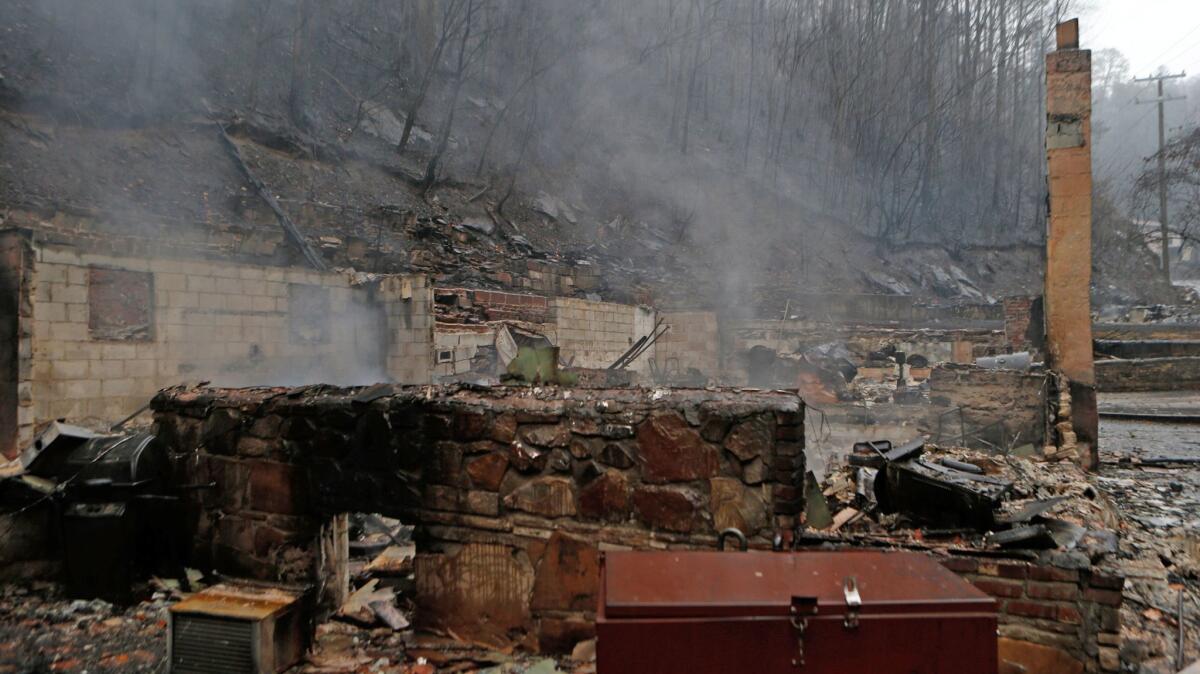
Smoke filled their truck as they hurtled past blazing, burned-out structures. “No warning, nothing,” Luciano said. “… Almost every cabin in Chalet Village is burning to the freakin’ ground!”
Dozens of guests and staff found themselves trapped inside the Park Vista, a modern, high-rise hotel perched on a ridge above downtown Gatlinburg. Some fled outside with their luggage, only to find the sole road to safety blocked by fallen trees and flames.
“Then the flames came up into the parking lot,” Logan Baker, a hotel guest, told WBIR-TV.
As Baker and his aunt frantically tried to help guests back inside, he said, embers started flying through the doors and into the hotel. Firefighters barricaded the hotel and urged guests to huddle in the center of the smoke-filled lobby as they worked to beat the fire back from the building.
Two days later, some Gatlinburg residents continued to search frantically for loved ones.
The last time Michael Reed, a maintenance safety trainer at the theme park Dollywood, spoke to his wife, Constance, was Monday evening. He and his son became stuck in traffic as they tried to drive home. As fires engulfed their neighborhood, Constance, who was with their two daughters, called to tell him flames were shooting across the street.
“I told them to call 911 and get out, and that was the last I heard from them,” he told the Knoxville News Sentinel on Wednesday.
Across Gatlinburg and surrounding Sevier County, more than 700 structures were damaged or destroyed – from the Sleepy Bear Motel to Cupid’s Chapel of Love, a tiny wedding venue.
State Highway 441 into Gatlinburg remained closed, and more than 14,000 residents and tourists were evacuated. At least 53 people were taken to hospitals.
“This is a once-in-a-lifetime event, I’m hoping,” Waters said, noting that severe drought and strong winds had created unique conditions. “I’ve never seen anything even close to this in this county, and I don’t expect to see it again.”
Still, much of downtown and some major tourist attractions appeared to have been spared. More than 10,000 animals at Ripley’s Aquarium of the Smokies in Gatlinburg remained safe, even though staff had been forced to evacuate Monday. In nearby Pigeon Forge, some cabins at Dollywood — co-owned by country singer Dolly Parton, who is from the area — were damaged or destroyed, but the park remained unscathed after firefighters dug a fire line.
With more than 10,000 people without power, emergency workers spent much of Wednesday clearing mudslides, debris and power lines. Even amid the rain, firefighters were called that afternoon to extinguish a new fire.
“We’re still working,” Miller said. “This is going to be a process that takes time.”
Jarvie is a special correspondent.
ALSO
The ‘alt-right’ splinters as supporters and critics agree it was white supremacy all along
UPDATES:
3:40 p.m.: The story was updated throughout with details on rain and the flood threat, and with figures on destruction and injuries.
The story was originally posted at 11 a.m.
More to Read
Sign up for Essential California
The most important California stories and recommendations in your inbox every morning.
You may occasionally receive promotional content from the Los Angeles Times.
